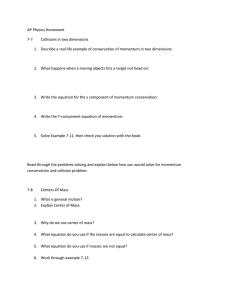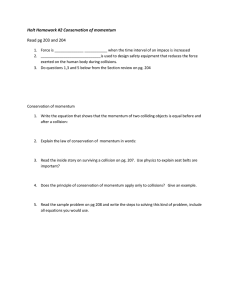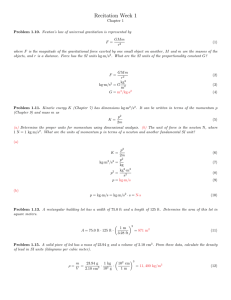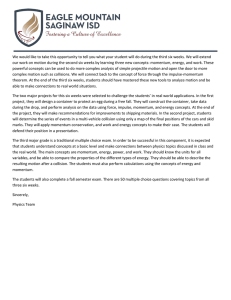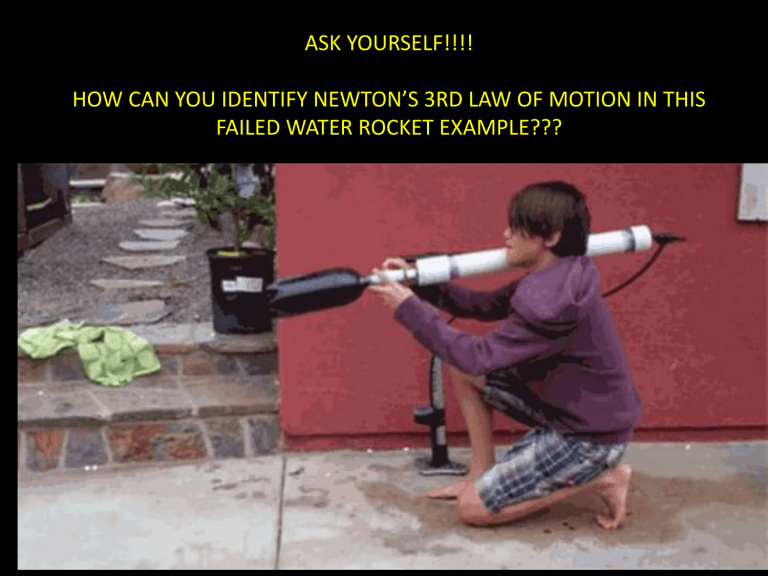
ASK YOURSELF!!!! HOW CAN YOU IDENTIFY NEWTON’S 3RD LAW OF MOTION IN THIS FAILED WATER ROCKET EXAMPLE??? rd Newton’s 3 Law of Motion • Newton’s 3rd Law: every action has an equal and opposite reaction. – When one object exerts a force on a second object, the second one exerts a force on the first that is equal in size and opposite in direction. • Ex. When you jump on a trampoline, the trampoline exerts the same force on you but pushes you the opposite direction. Law of Conservation of Momentum • Momentum: (p) mass in motion. p = mv p = momentum m = mass v = velocity Measured in kg*m/s Measured in kg Measured in m/s – All moving objects have momentum. – Momentum is transferred between objects in a collision. ASK YOURSELF!!!! HOW CAN YOU IDENTIFY NEWTON’S 3RD LAW OF MOTION IN THIS BOUNCING PEOPLE’S EXAMPLE??? (Yes, this law comes with a painful consequence ) Law of Conservation of Momentum Example #3: What is the momentum of a car with a mass of 1300 kg traveling at a speed of 28 m/s? p=? m = 1300 kg v = 28 m/s p = mv p = (1300 kg)(28 m/s) p = 36,400 kg*m/s Law of Conservation of Momentum • In a collision, because the forces acting on the two objects are equal and opposite (Newton’s 3rd Law), the transfer of momentum must be the same. 🡪 Law of Conservation of Momentum: momentum is never created or destroyed in a collision, it is only transferred. Law of Conservation of Momentum Example #4: Ball #1 is rolling 11 m/s directly toward a 0.17 kg ball #2 at rest. During the collision, ball #1 stops and ball #2 is launched forward at 9 m/s. What is the mass of ball #1? (think about the Law of Conservation of Momentum) m1 = ? v1 = 11 m/s p1 = ? m1 = ? v1 = 11 m/s p2 = ? m2 = 0.17 kg v2 = 9 m/s m2 = 0.17 kg p = mv Due to Law of conservation of momentum… p1 = p 2 v2 = 9 m/s m1 = p 1 v1 p2 = 1.53 kg*m/s m1 = 1.53 11 p1 = m1v1 v1 v1 m1 = 0.14 kg m1 = p 1 v1 p2 = (0.17)(9)
